Order and request management

Process orders and inquiries automatically
State-of-the-art AI software reads emails incl. attachments, such as order documents, quickly and correctly - on a human level. Recognition rates of up to 99%, even for multiple items and unstructured documents, make it possible to automate work that was previously only possible manually.
The AI system
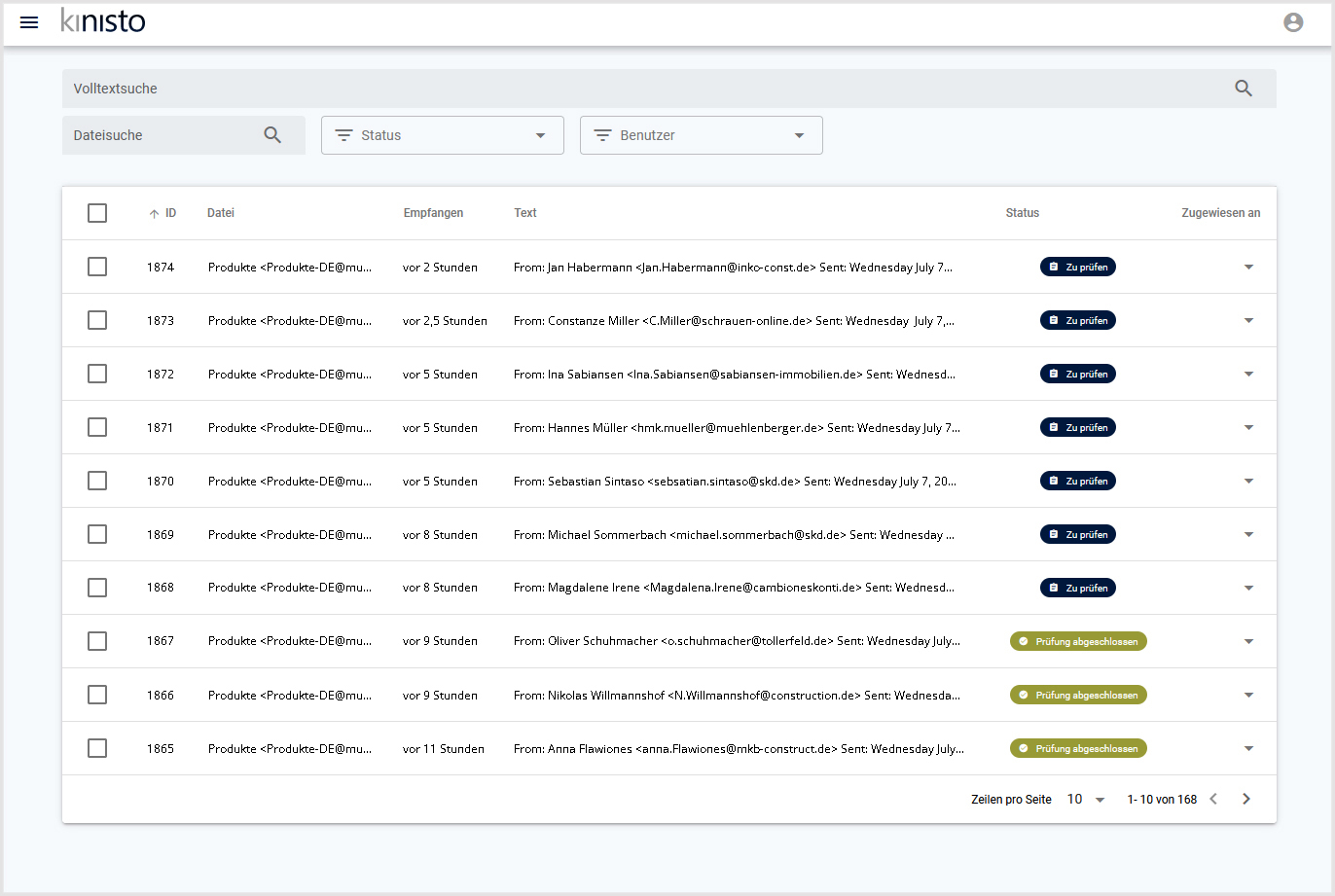
Overview of incoming requests and orders
- Channel-independent, automated processing.
- Whether email attachments, mail or scan
- Full text search and numerous filter functions
- Possibility to assign documents to a processor
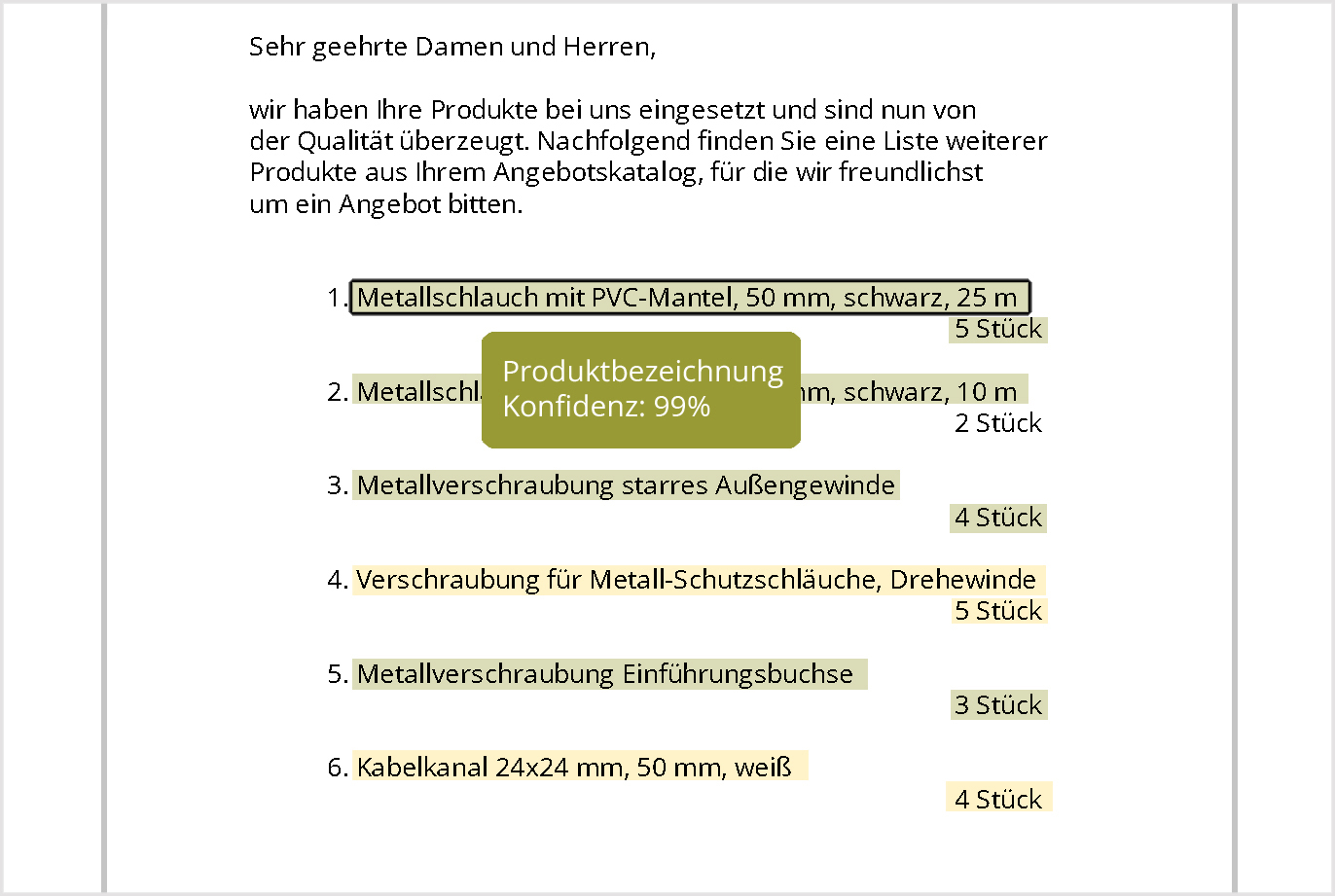
Fully automatic, precise analysis of documents
- Reliable recognition of relevant information
- Recognition rates up to 99%.
- Correct reading of even several positions.
- Automatic recognition of new formats
- indication of confidence
- Color labeling
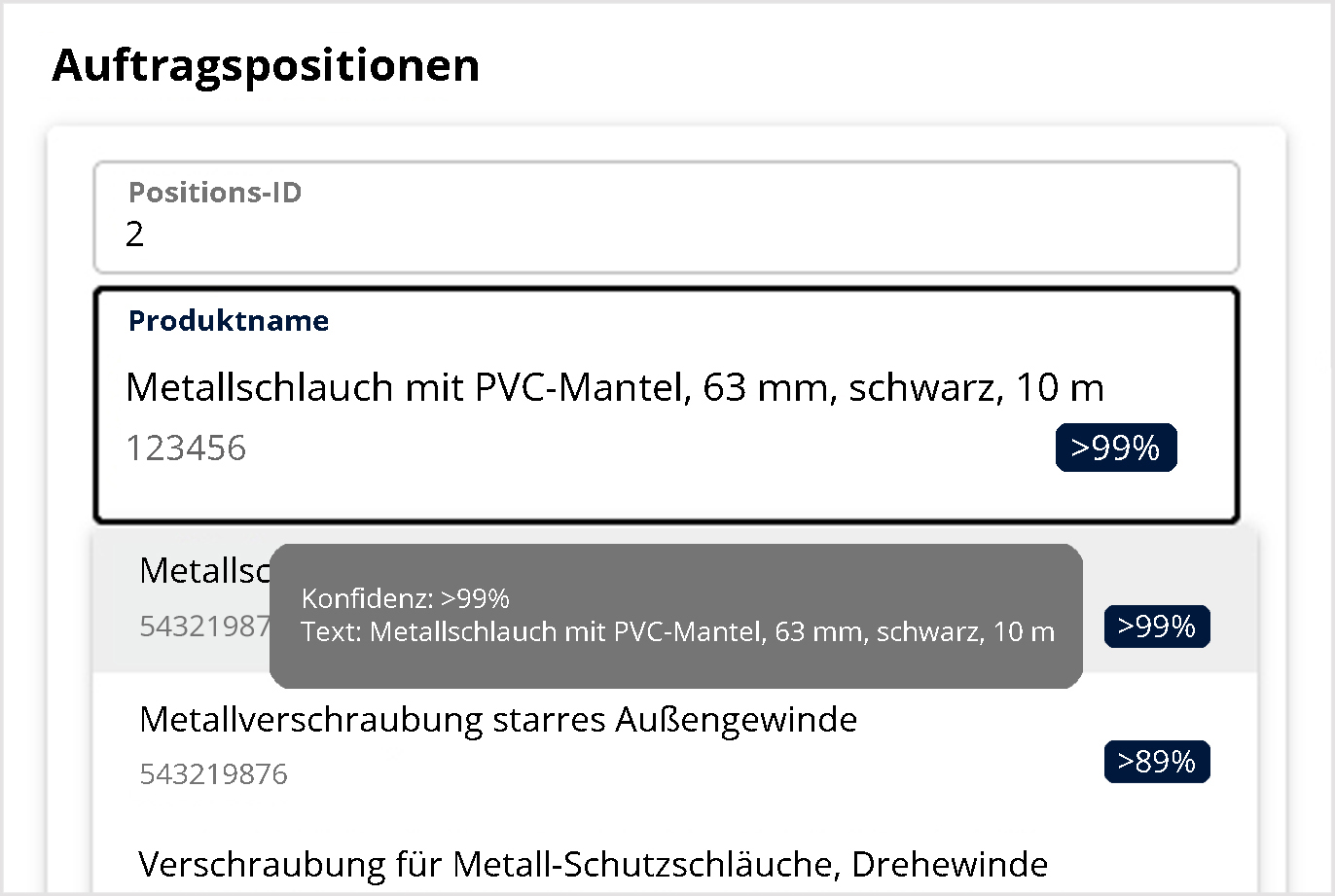
Comparison with product and customer data
- Direct connection to leading systems
- Automated matching with product data, service specifications and customer data
- Even with different spellings and typing errors
- Via drop-down direct adjustment
- No system change necessary
Contact details
Product type
Item quantity
Products
Product categories
Discount
Prices
Item number
and many more
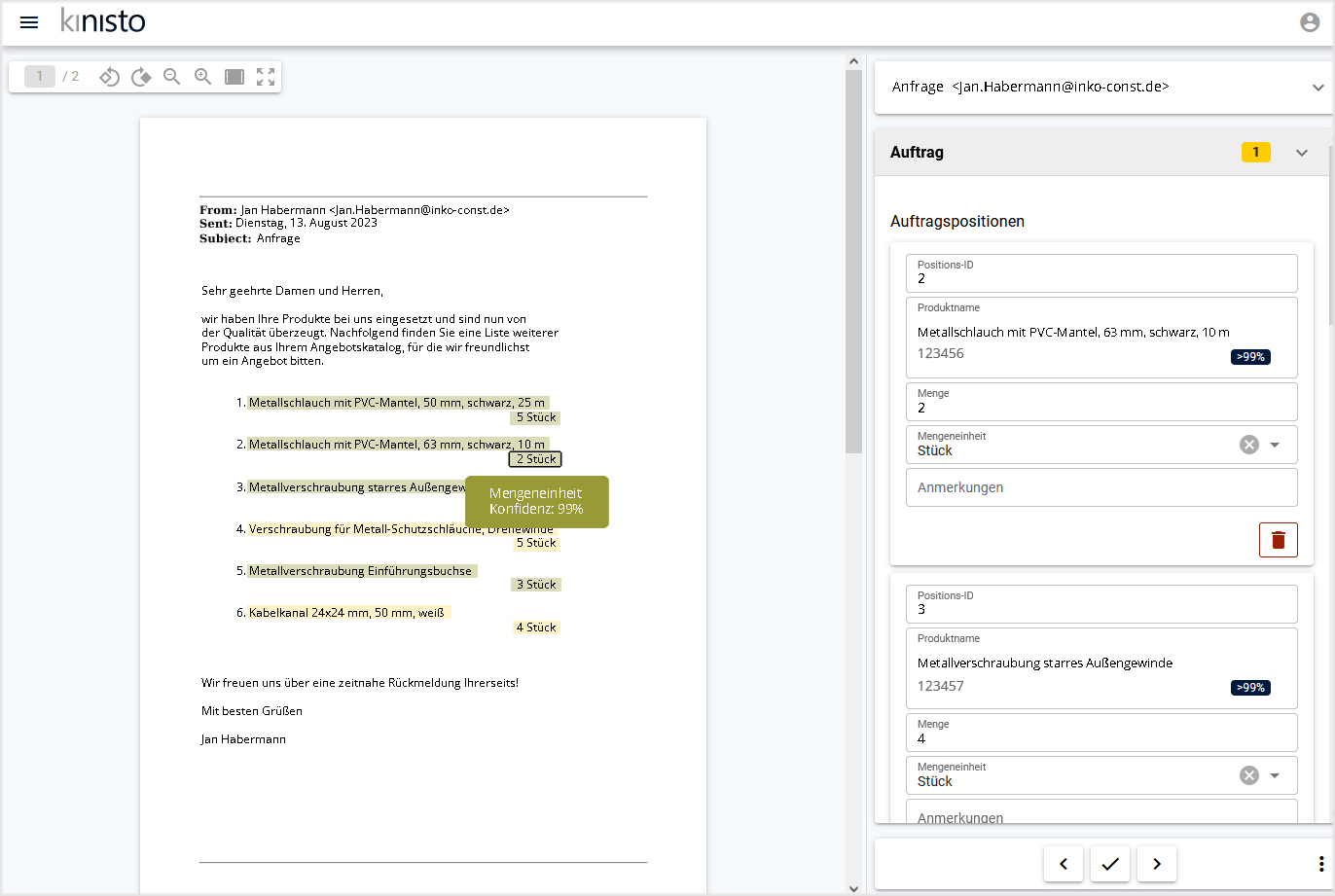
Optimized review interface
- Human-in-the-loop interface
- Fast testing by humans
- Direct adaptation possible
- Modern design and intuitive usability
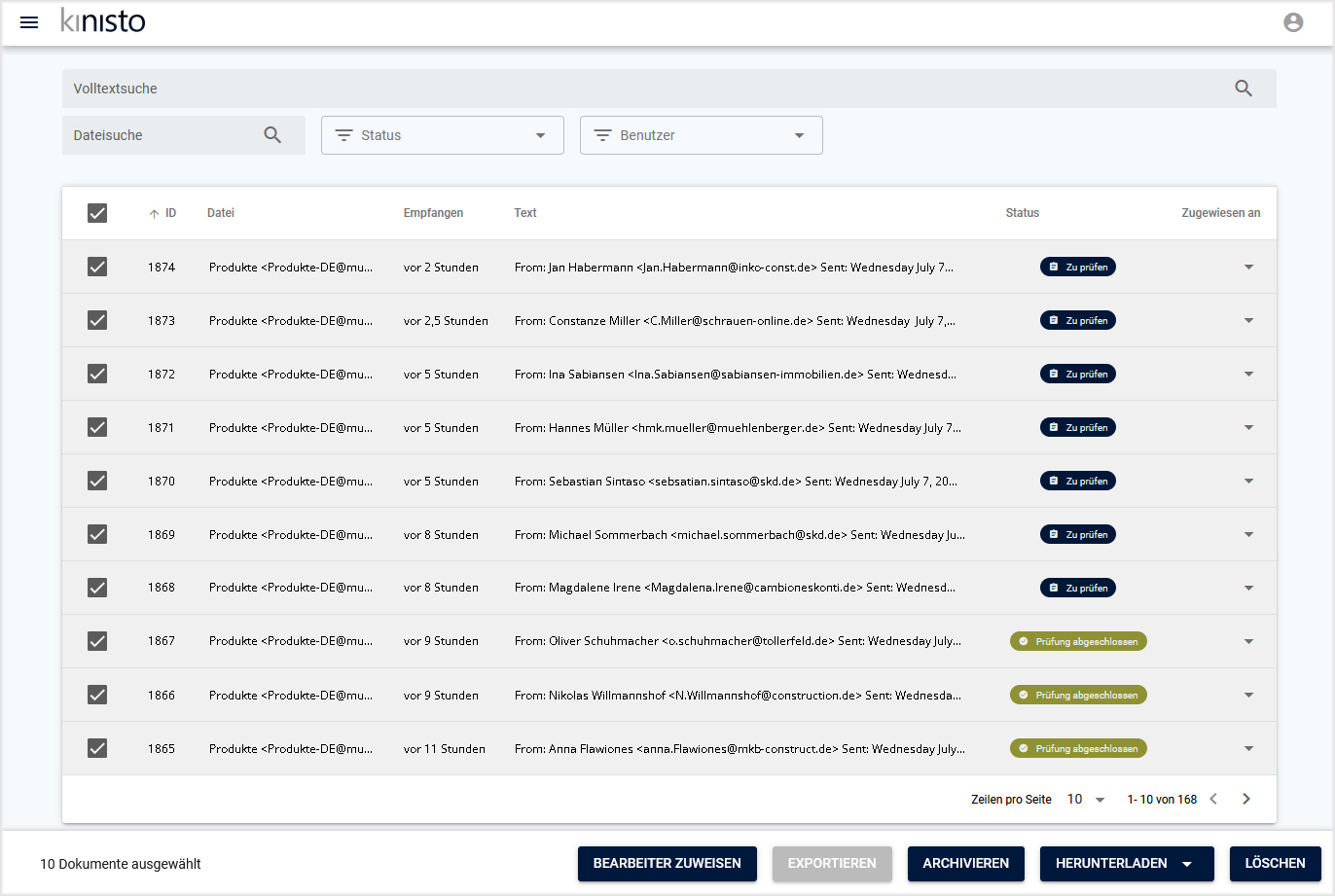
Seamless connection
- Completely integrated into the company processes.
- Order created automatically in ERP (e.g. SAP).
- Per document or collected
Efficient request management in just a few weeks
More efficient and better performing: automate your inquiry management now with innovative technology. kinisto is ready for use in no time and can be seamlessly connected to existing systems.
As a specialist in process optimization, we would be happy to advise you on the use of the latest AI technology in inquiry management.
In practice

Inside sales
The AI systematically reads e-mails (including attachments) and other documents on a human level and can directly match customer requests with the product or service catalog. In the process, the product designation used by the customer in his inquiry does not have to match internal designations 100%. This significantly increases the efficiency of the sales team: quotations and orders can be created without delay.

Customer service
The use of AI technology in customer service revolutionizes inquiry management and significantly increases customer satisfaction. The automated categorization and assignment of incoming inquiries enables structured processes and reduces the duplication rate. Even complete automation of routine processes is possible. For example, the dark processing of change requests to data such as IBAN or address.

AI makes the difference
Digital processing of incoming orders means process acceleration. From the type of goods to the quantity of goods to the customer’s data - kinisto not only recognizes information based on text and position recognition, but also reads the document like a human being. kinisto works contextually. This means that the text modules are recognized and then placed in relation to all other contents of a document. In this way, the actual content can be recognized, “understood” by the machine and output as data. The structured information can be processed directly without delay.
Orders and requests will be data
kinisto goes a big step further than conventional classification and data extraction systems. Based on Natural Language Processing (NLP) with Deep Learning methods, kinisto recognizes information in context and makes it usable.
Classification & Data Extraction
Whether in e-mails, attachments or scans, kinisto recognizes text modules, puts them in context with each other and extracts the relevant information in a structured manner - regardless of the wording or form of the query. All relevant data is thus available quickly and in a usable form.
Process optimization
Thanks to the rapid availability of information, orders and inquiries can be processed much faster. The structured data can be matched directly (with product or service catalogs) or even processed fully automatically (e.g. for a “simple” bank data change).
